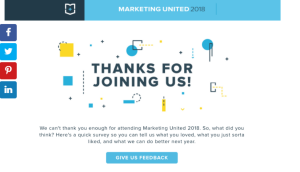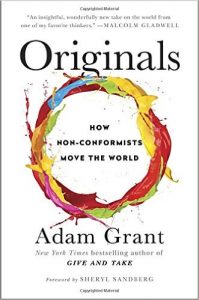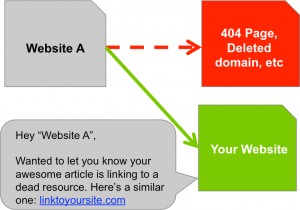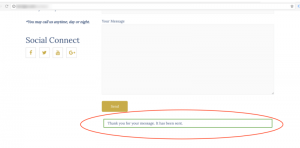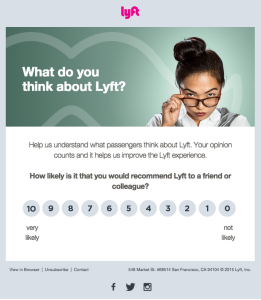Last week, I published a list of 250 #fintech influencers that ought to be on the radar of any startup, investor, incumbent business, or interested observer in the banking and financial services space.
In publishing this data and discussing it with lots of folks, it became clear to me that many people see the value of this data in its ranking of individual #fintech influencers. While the data is clearly useful in this way, there are more strategic uses for this kind of influencer that often seem to be overlooked.
This article seeks to identify several common use case scenarios for influencer data and briefly outlines how this information can be used strategically in these scenarios.

Let’s start with a few of the most common use case scenarios:
1. INFLUENCING: You want to become a #fintech influencer
There are many people that are active and influential in the #fintech space who could benefit by increasing their online visibility. Perhaps you’re a #fintech startup CEO, an investor, or a journalist and you want to establish your profile and increase your visibility within the #fintech community. Or maybe you’re already on the list and want to move up.
2. COMMUNICATING: You want to get your message out to the #fintech community
The people on the #fintech influencers list have accumulated a targeted group of followers who trust them and rely on their informative content feeds. Perhaps you are promoting a conference, a publication or a specialized consulting practice focused on the #fintech sector. This is a group you want to get you message out to.
3. LISTENING: You want to stay on top of #fintech news and developments
Maybe your primary interest is in staying on top of news and developments in the rapidly changing #fintech space. Paying attention to the discussions and content shared among #fintech influencers is an efficient and powerful way to filter vast amounts of information and get a sense of what they’re talking about – and not talking about.
Having established a number of use case scenarios, let’s look at some tactical ways the #fintech influencer data can be leveraged.
Before looking at the tactical uses, though, we need to understand the breadth of data that is available. First, the top 250 #fintech influencers come from a dataset containing almost 7,000 online identities. The data includes location data, links to other social media profiles such as Facebook, LinkedIn and Google+, as well as supplementary sites like blogs.
How to grow your influence
If you wanted to increase your own influence and position yourself as a top influencer in the #fintech space, you should consider undertaking the following activities:
- Start by clarifying your personal brand and defining how you want to be seen online. This is important work, but is often overlooked.
- Next, follow many of the top #fintech influencers on Twitter in daily groupings in order to abide by Twitter’s restriction against aggressive following.
- Actively curating and sharing relevant information from top influencers on a daily basis is one of the best ways to increase visibility, ensuring that you mention influencers when they are authors or sources of the content.
- Finally, seek opportunities to participate in and add value to industry discussions. This is easier said than done, but typically involves a publishing platform (such as, your blog) and a strong listening component (see below).
Earning the right to tell your story
Most people and businesses have a message to communicate in social networks, but an influencer list is not best approached with a bullhorn in hand. A more nuanced approach would take into consideration the following:
- Initiate LinkedIn connection requests with key influencers who you’ve already interacted with on Twitter. Twitter engagement is more open and informal, whereas LinkedIn connections require mutual consent and is often reserved for people you already know. Once connected, share relevant information and mention influencers in regular LinkedIn updates.
- Look for opportunities to move conversations offline, such as seeking out influencers at industry conferences or even arranging introductory phone calls – but only after initially “breaking the ice” via digital exchanges, usually via Twitter. The direct message (DM) function on Twitter is a great way to virtually tap someone on the shoulder and suggest a call.
- Don’t push your message on people until you’ve earned the right to. Focus on investing in and growing your network of influencers for at least 6-12 months before making any substantive asks.
- Look for ways to help influencers expand their audience and reach by referencing them in blog posts and articles, featuring them in your webinars and podcasts, etc. People will always reciprocate when someone gives without asking for anything in return.
You’ve got two ears and one mouth, so listen
Listening is central to both of the aforementioned use case scenarios. Social networks are highly conversational and conversations can’t exist without listening. Here are some tips for listening to #fintech influencers most effectively:
- Try creating Twitter lists of key influencers based on subgroups you want to monitor and/or pay attention to more closely.
- Broaden the social profiles that you monitor for key influencers to include Facebook pages, Google+ and Instagram accounts, if they are active in those social networks.
- Consider procuring commercial listening tools that sift through mountains of data and identify most highly shared content and popular discussions within the #fintech space.
- Assemble a team to help you listen. Get more people in your company listening to their networks and sharing their insights and intelligence internally. And leverage external consultants and subject matter experts to help you.
It’s called social networking
These are fairly generic tactical steps that can be applied to any group of influencers, not just #fintech ones.
And these tactics are more akin to networking and public relations, than sales or marketing. That’s because influencers are not typically your sales prospects – but their followers may be your best prospects.
By building genuine relationships and engagement with online influencers, you can increase your visibility, gain valuable social proof and meet some amazingly smart and generous people along the way.
Business & Finance Articles on Business 2 Community(83)
Report Post

